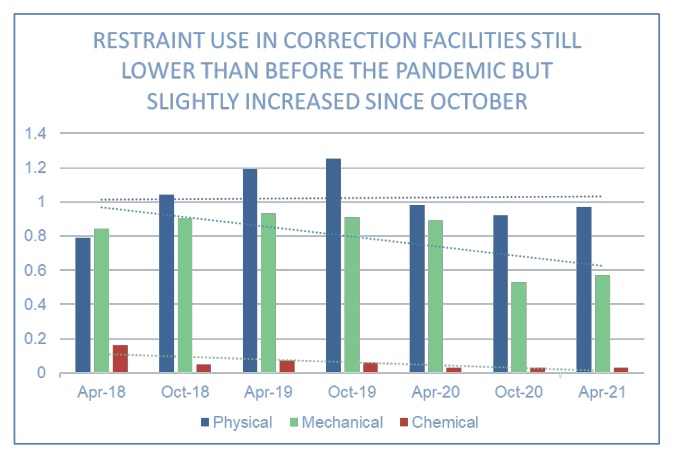Fewer juveniles were placed in restraints and more reported that they’ve had positives dealings with staffers at juvenile agencies, according to April 2021 data voluntarily submitted by 148 pre-trial and other short-term detention facilities, longer-term correctional facilities, assessment and in-community residential programs in 32 states.
Released in August by the Performance-based Standards Learning Institute, partnering with Vera Institute, the snapshots of data gauge COVID-19’s impact on juveniles in those states and on their families who, with in-person visits banned during he pandemic, had to find other ways to connect.
Based on 55,000 incident reports about juveniles either in detention facilities or community-based residential programs from 2018 to 2021, analysts concluded that detention centers, which historically used restraints more than long-term correctional, employed those restraints less often.

Analysts wrote that, during the month of April 2021 alone:
- In detention facilities, physical restraints were used seven or eight times. Mechanical restraints were used less than three times.
- In an average 39-bed correction facility, physical restraints were used 11 to12 times and mechanical restraints six to seven times during the same period.
- As fewer restraints were used, more youths responded positively to eight standardly asked questions in October 2020 than in the previous two years.
- The relatively small increases — to 4% from 2% — were, nonetheless, worth highlighting.
Results of 2,623 surveys of youths' family members, conducted from April 20019 to April 2021, found that:
- 8% of family members said they did not know how to call their child.
- 9% said they did not know how to visit their child.
- The proportion of relatives preferring video-calling to stay in touch with their child jumped from 3% to 31% since the pandemic started.
- The proportion of relatives preferring in-person visits dropped to 22% in April 2021 from 52% in April 2019.
- 89% of family members said they felt that their child was safe at the facility.
- 96% said they had spoken to their children, usually by telephone, from October 2020 to April 2021.
- 52% had in-person visits with their children during that period. That compared to 60% during the previous six months, and 79% from October 2019 through April 2020.
